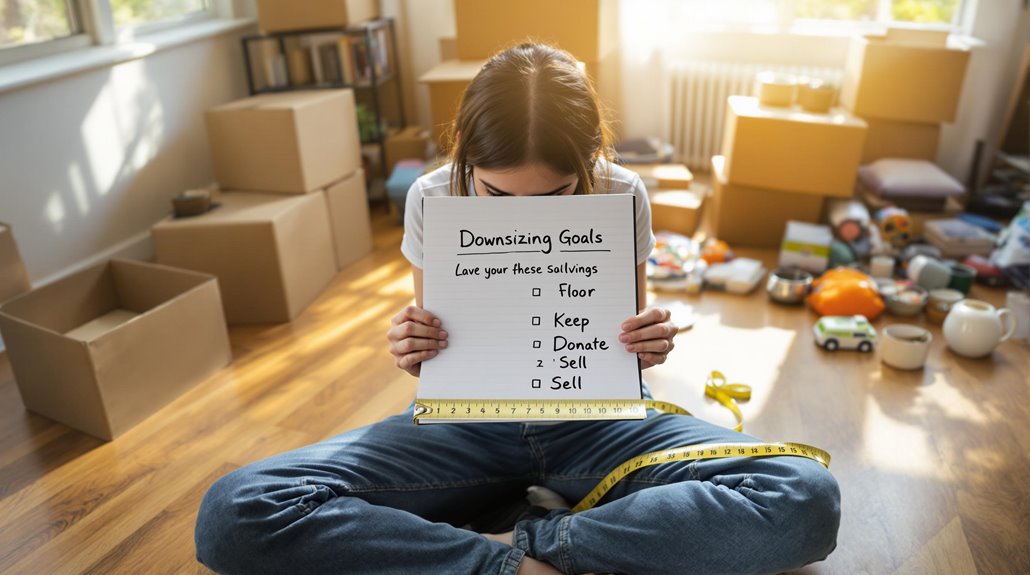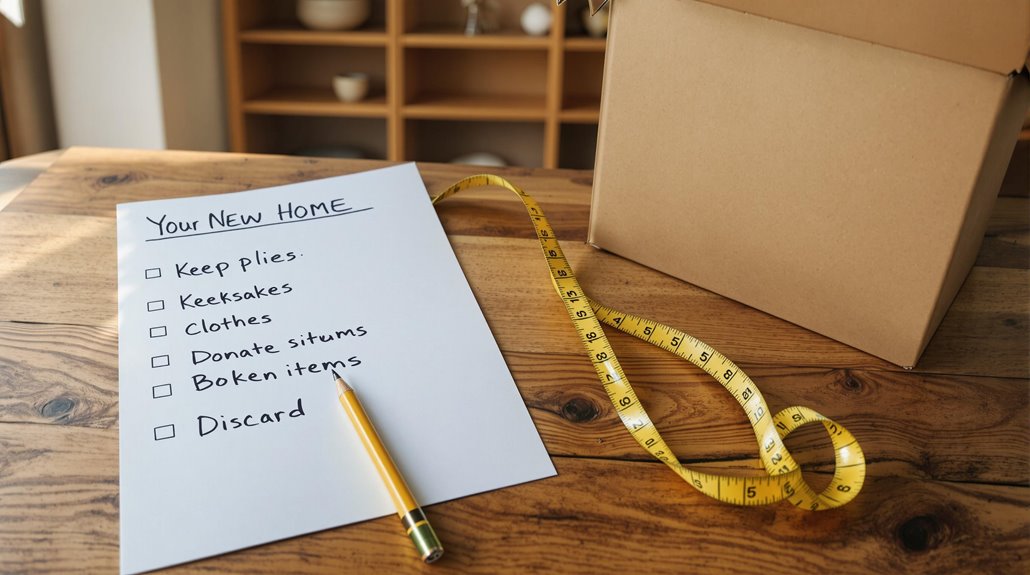Downsizing to a smaller home presents both challenges and opportunities for homeowners seeking simplicity. The process requires careful planning, thoughtful inventory assessment, and strategic space utilization. Many individuals find themselves overwhelmed by the sheer volume of possessions accumulated over years or decades. A well-structured moving checklist serves as an essential tool, guiding homeowners through each stage of the change while reducing stress and preventing costly mistakes. The following extensive framework offers a pathway to successful downsizing.
Key Takeaways
- Begin with a room-by-room inventory using color-coded labeling to track items and identify what to keep, donate, or sell.
- Measure spaces in your new home and create a floor plan before moving to ensure furniture fits properly.
- Schedule regular two-hour decluttering sessions to avoid burnout while sorting through belongings systematically.
- Invest in multipurpose furniture and vertical storage solutions to maximize space in your smaller home.
- Establish clear financial priorities and create a budget for moving costs, storage solutions, and potential home modifications.
Assessing Your Downsizing Goals and Needs

When starting a downsizing journey, individuals must first assess their fundamental goals and requirements to guarantee successful alterations. Understanding personal downsizing motivations helps create a focused plan—whether seeking financial freedom, minimizing maintenance responsibilities, or embracing a more mobile lifestyle.
Prospective downsizers should evaluate their current living patterns, identifying which spaces they regularly use versus areas that remain largely vacant. This honest assessment reveals true spatial needs rather than assumed ones.
Additionally, considering long-term health and accessibility requirements guarantees the new living arrangement will remain suitable as circumstances evolve.
Lifestyle preferences markedly impact downsizing decisions. Those who prioritize cooking need functional kitchens, while hobbyists require dedicated creative spaces.
Determining these non-negotiable elements early prevents regrettable compromises and creates a foundation for thoughtful planning throughout the shift process.
Creating a Comprehensive Inventory System
Once goals and needs have been established, the next phase of successful downsizing depends on maintaining precise records of possessions. The most effective approach combines room-by-room analysis with strategic categorization by function and frequency of use.
Successful downsizing requires meticulous inventory management—combining spatial organization with practical categorization to transform overwhelming possessions into manageable assets.
Modern inventory methods leverage both manual and technological solutions. Digital tools like Sortly allow users to photograph, categorize, and track items across devices, while supplementing these with traditional written lists guarantees thorough documentation. This dual approach particularly benefits those serving family members through the moving process.
When developing an inventory system, prioritize documentation that supports decision-making: identify redundancies, flag sentimental items, and record measurements of larger pieces.
Color-coded labeling and cloud accessibility enable collaboration with movers and family members, streamlining the entire downsizing experience.
Strategic Decluttering and Item Disposition

Tackling the monumental task of strategic decluttering requires both psychological preparation and practical methodology. With the average American home containing over 300,000 items, breaking the process into time-boxed sessions of two hours can prevent burnout while maintaining momentum.
To overcome emotional attachment to possessions, implement cognitive framing techniques by creating “Maybe” boxes that allow temporary distancing from items before final decisions. The two-minute rule encourages immediate action on easily disposable items rather than postponing them.
When sorting, group similar objects together before determining what to keep, reducing decision fatigue.
For item disposition, consider the growing secondhand market, which is projected to outpace fast fashion by 50% within a decade. Community exchanges, consignment partnerships, and digital resale platforms offer various options for giving possessions new homes.
Space Planning for Your New Home
Space planning for a smaller home presents both exciting opportunities and creative challenges for downsizing households. Before moving day, acquire accurate measurements of each room to develop realistic space utilization strategies.
Consider vertical storage solutions such as wall-mounted cabinets and high shelving to maximize available square footage.
Evaluate furniture needs based on the new floor plan, prioritizing multifunctional pieces like sofa beds or dining tables with built-in storage.
Create distinct zones within open areas using area rugs or strategic lighting rather than space-consuming walls. For homes with limited natural light, incorporate mirrors and light-colored paint to enhance brightness and perceived spaciousness.
Installing adjustable-height surfaces provides flexibility for various activities, while foldable desks and retractable tables allow spaces to transform according to daily needs.
Financial Planning for the Downsizing Process

Effective financial planning serves as the cornerstone of a successful downsizing process, enabling households to maximize potential gains while minimizing unexpected costs.
Establishing clear financial priorities early helps homeowners capitalize on smaller mortgage payments, reduced property taxes, and lower utility costs associated with less square footage.
Comprehensive budgeting strategies should account for both immediate and long-term expenses.
Consider allocating funds for moving services, temporary storage solutions, and potential home repairs before listing your current property.
Consulting financial advisors can provide valuable insights into tax optimization opportunities, especially for seniors relocating to states with favorable tax structures.
Analyze community fees, insurance adjustments, and maintenance cost reductions when calculating your post-move budget.
Many downsizers discover significant savings in lawn care, gardening expenses, and overall property maintenance, contributing to a more financially sustainable lifestyle.
Organizing the Physical Move and Timeline
Organizing a successful physical move requires meticulous planning that begins months before the actual moving day. Experts recommend starting the decluttering process at least 90 days prior to the move date to manage the workload effectively.
Timeline management should include creating detailed to-do lists organized by priority and scheduling utility disconnections and connections.
When managing moving logistics, obtaining multiple estimates from moving companies is essential. Secure written contracts outlining damage coverage and pricing, then confirm arrival times for both loading and unloading.
Throughout the packing process, label boxes by room and include contents lists to streamline the unpacking experience. Creating an accessible essentials box containing medications, toiletries, and snacks guarantees comfort during the shift day.
Finally, prepare change-of-address forms for mail and subscriptions well before moving day.
Setting Up Your Smaller Space Efficiently

While downsizing to a smaller home presents unique challenges, proper spatial planning creates opportunities for efficient, comfortable living.
Begin by conducting a thorough inventory of belongings, implementing a “keep-donate-discard” system to eliminate non-essential items. Allocate specific zones for different activities to maximize functionality in limited square footage.
Vertical storage solutions are essential in smaller spaces. Install shelving units, wall-mounted racks, and hanging organizers to utilize vertical space effectively.
For furniture selection, prioritize multipurpose pieces such as ottomans with storage compartments or foldable tables that can be tucked away when not in use. Choose narrow-depth cabinets and compact appliances designed for tight spaces.
Maintain organization through weekly cleaning routines and a “one in, one out” policy to prevent clutter accumulation, ensuring your downsized home remains functional and stress-free.
Frequently Asked Questions
How Do I Help Elderly Parents Emotionally Adjust to Downsizing?
Helping elderly parents adapt to downsizing requires gentle emotional support throughout the process.
Adult children should involve parents in decisions to preserve autonomy, validate their feelings of loss, and maintain familiar routines during change.
Memory preservation strategies, such as digitizing photos or creating memory boxes, help parents retain connections to cherished spaces.
Approaching the process gradually, with professional support when needed, allows parents time to adjust while recognizing the long-term benefits.
What Digital Tools Can Preserve Memories of Items I’m Discarding?
Digital photography allows individuals to create lasting images of meaningful belongings before parting with them.
Memory apps like Keepy, Artkive, or StoryWorth enable users to catalog these photos with recorded stories and contextual details.
For sentimental collections, specialized platforms such as Legacy Box digitize physical media while cloud storage services guarantee these digital memories remain accessible across devices.
3D scanning applications can even preserve dimensional objects as virtual models for future reminiscence.
How Do Neighborhood Demographics Affect Post-Downsizing Social Integration?
Neighborhood demographics greatly influence social integration after relocating. Community diversity, particularly age and cultural composition, shapes available social connections and support systems.
Higher-density areas typically offer more structured engagement opportunities, while neighborhoods with positive perceptions of safety foster greater interaction. Medium levels of social integration correlate with better health outcomes, making communities with collaborative tendencies and organized programs particularly beneficial for newcomers seeking to establish meaningful relationships within their new environment.
When Should I Involve Children in Heirloom Distribution Decisions?
Initiating heirloom conversations early, while parents are still physically and mentally capable, allows for thoughtful family involvement in distribution decisions.
Experts recommend beginning these discussions before health issues arise, typically when children reach adulthood.
This proactive approach enables transparent dialogue about emotional attachments, permits implementation of objective distribution methods like priority lists, and minimizes potential conflicts while respecting both sentimental and financial values attached to meaningful possessions.
What Psychological Impacts Might I Experience After Significant Downsizing?
Individuals often experience complex psychological responses after significant downsizing, including feelings of loss and grief when parting with possessions that held memories or represented achievements.
Attachment issues may emerge as people confront changes to their physical surroundings and reconsider their identity without familiar objects.
Many report initial distress followed by relief, particularly when downsizing decisions were aligned with personal values rather than solely financial considerations.
Bottom Line
Downsizing offers an opportunity to simplify life while creating a more efficient living environment. By following this thorough checklist, homeowners can navigate the change with confidence and minimal stress. From evaluating goals to efficiently organizing the new space, each step contributes to a successful move. With proper planning and execution, downsizing becomes not just a reduction in square footage, but a meaningful lifestyle enhancement.




